“People can’t find homes, they’re very expensive. We also have an aging population … so there’s less and less people who are electricians, plumbers, or builders,” says Habib Dagher, the executive director of the University of Maine’s Advanced Structures and Composites Center (ASCC). They recently unveiled what may be the world’s largest polymer 3D printer. Dagher hopes the-so-called “Factory of the Future” can help address the state’s housing crisis – and revolutionize 3D-home-printing in the process.
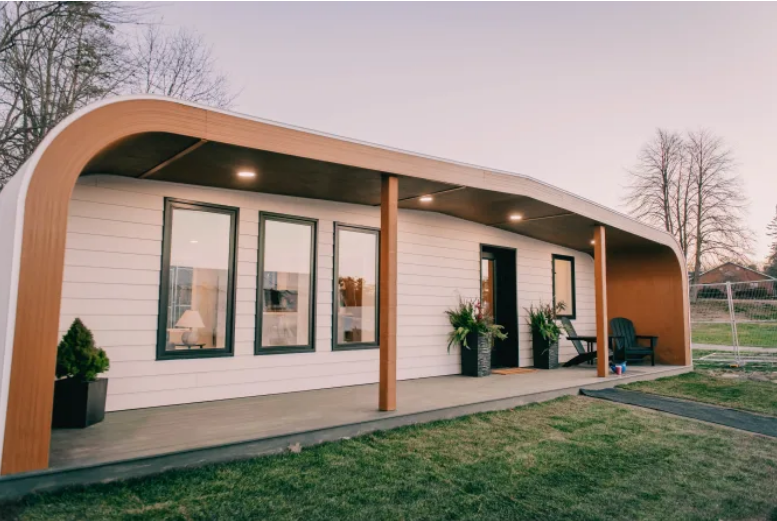 A great majority of current printing relies on concrete, with a robotic arm equipped with a nozzle layering wet concrete into the right shape. ASCC’s giant printer, and its predecessor are the only printers building homes with wood residuals, says Dagher. In late 2022, the university unveiled the “BioHome3D,” a 600-square-foot single-family unit which it says is the world’s first 100% bio-based 3D-printed home, built from local wood fiber and bio-resin materials.
A great majority of current printing relies on concrete, with a robotic arm equipped with a nozzle layering wet concrete into the right shape. ASCC’s giant printer, and its predecessor are the only printers building homes with wood residuals, says Dagher. In late 2022, the university unveiled the “BioHome3D,” a 600-square-foot single-family unit which it says is the world’s first 100% bio-based 3D-printed home, built from local wood fiber and bio-resin materials.
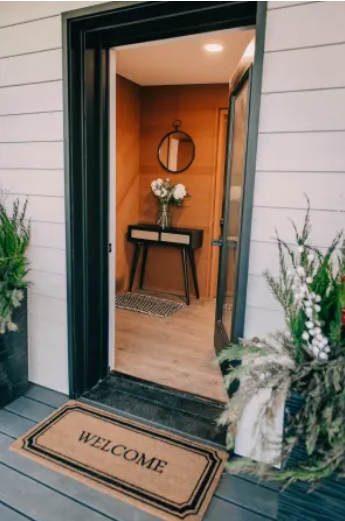 “When they’re doing concrete, they’re only printing the walls,” says Dagher. He adds that the floor, roof and walls of the BioHome3D were all printed. Concrete homes also need to be built on site, he says. That can be problematic, especially during the snowy New England winter. “When the weather goes bad for two weeks at a time, you can’t print,” he adds. Bay contrast, ASCC printed prefabricated modules at the university and bolted them together on site to create BioHome3D.
“When they’re doing concrete, they’re only printing the walls,” says Dagher. He adds that the floor, roof and walls of the BioHome3D were all printed. Concrete homes also need to be built on site, he says. That can be problematic, especially during the snowy New England winter. “When the weather goes bad for two weeks at a time, you can’t print,” he adds. Bay contrast, ASCC printed prefabricated modules at the university and bolted them together on site to create BioHome3D.
The new printer can produce objects as large as 96 feet long by 32 feet wide by 18 feet high and can print up to 500 pounds per hour. Dagher says that the goal is to be able to print 1,000 pounds of material in an hour. At that rate, it could reproduce the BioHome3D in 48 hours, he says. If they can reach that target, their 3D-printed homes will be “very competitive with current housing construction costs,” he adds.
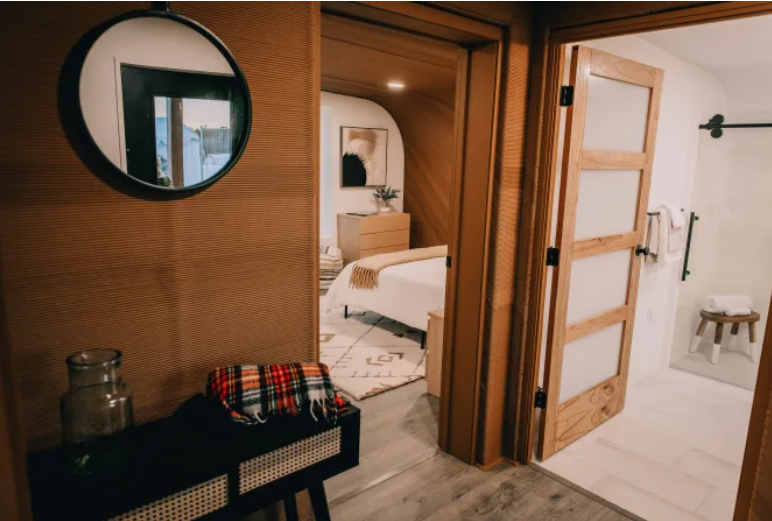 The BioHome3D’s warm wooden floors and walls give it the look of a sleek, modern Scandinavian-inspired log cabin. “Many people feel concrete is a cold thing to look at and it’s not necessarily where you want to live,” says Dagher. The BioHome3D, however, is “very warm and inviting.”
The BioHome3D’s warm wooden floors and walls give it the look of a sleek, modern Scandinavian-inspired log cabin. “Many people feel concrete is a cold thing to look at and it’s not necessarily where you want to live,” says Dagher. The BioHome3D, however, is “very warm and inviting.”
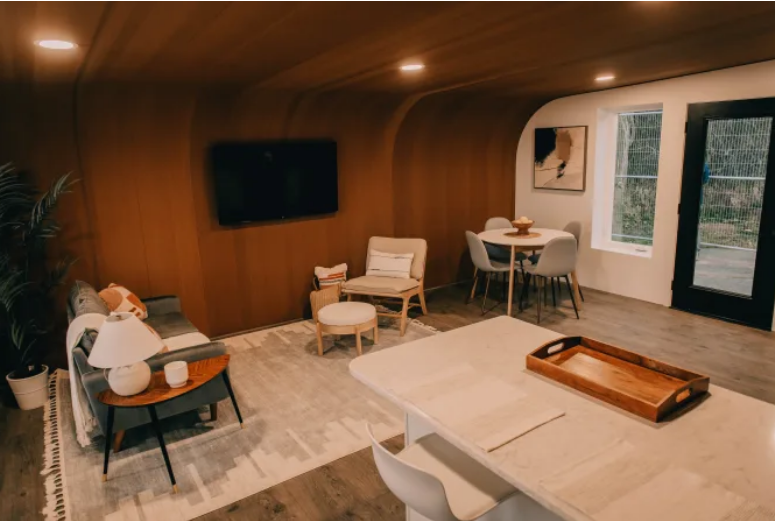 It’s also sustainable. When a home is no longer needed or wanted it can be ground up and used to print something else. ASCC is using wood residuals from Maine’s sawmills in its research, and looking into scaling up production using these local byproducts.
It’s also sustainable. When a home is no longer needed or wanted it can be ground up and used to print something else. ASCC is using wood residuals from Maine’s sawmills in its research, and looking into scaling up production using these local byproducts.
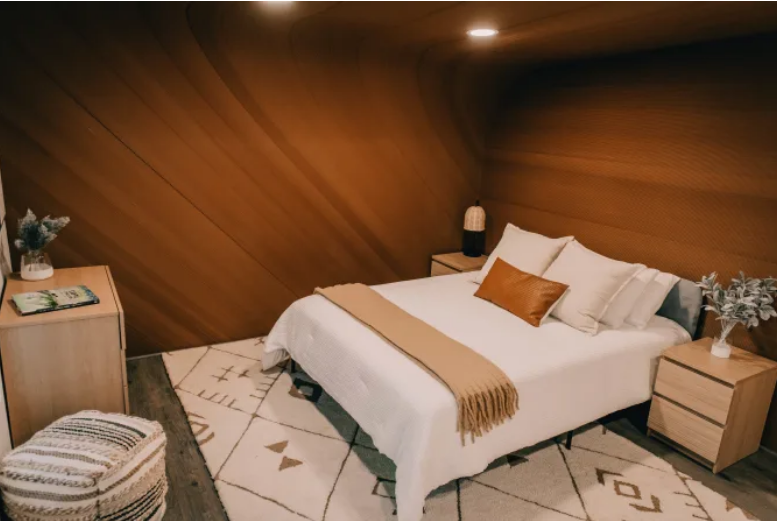 Thousands of people have toured the prototype on the university’s Orono, Maine campus, and Dagher says it’s a rare occurrence when a visitor doesn’t ask, “’When can I have one?’”
Thousands of people have toured the prototype on the university’s Orono, Maine campus, and Dagher says it’s a rare occurrence when a visitor doesn’t ask, “’When can I have one?’”
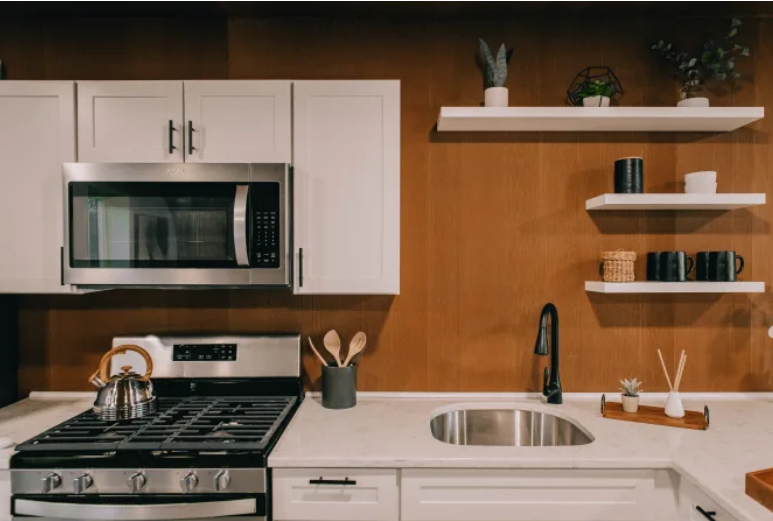 There are some obstacles to overcome first. “It takes years for codes to change,” says Dagher, referring to building codes that construction companies must meet. The printer won’t displace traditional home construction, but in the future 3D printed homes are likely to comprise a larger share of the world’s housing stock, he predicts.
There are some obstacles to overcome first. “It takes years for codes to change,” says Dagher, referring to building codes that construction companies must meet. The printer won’t displace traditional home construction, but in the future 3D printed homes are likely to comprise a larger share of the world’s housing stock, he predicts.
The ASCC is now doing work on how to incorporate conduits for wiring and plumbing “exactly where an architect would want them” into the printing process.
The printer’s next big project is a nine-home neighborhood for people experiencing homelessness. ASCC is partnering with a local NGO to design the structures, and printing is set to kick off in 2025.
You can read the original article at www.cnn.com

Zoning and building code no doubt are extremely resistant to change! There definitely is potential in this new technology, not only for detached houses, but also townhomes and apartments too.